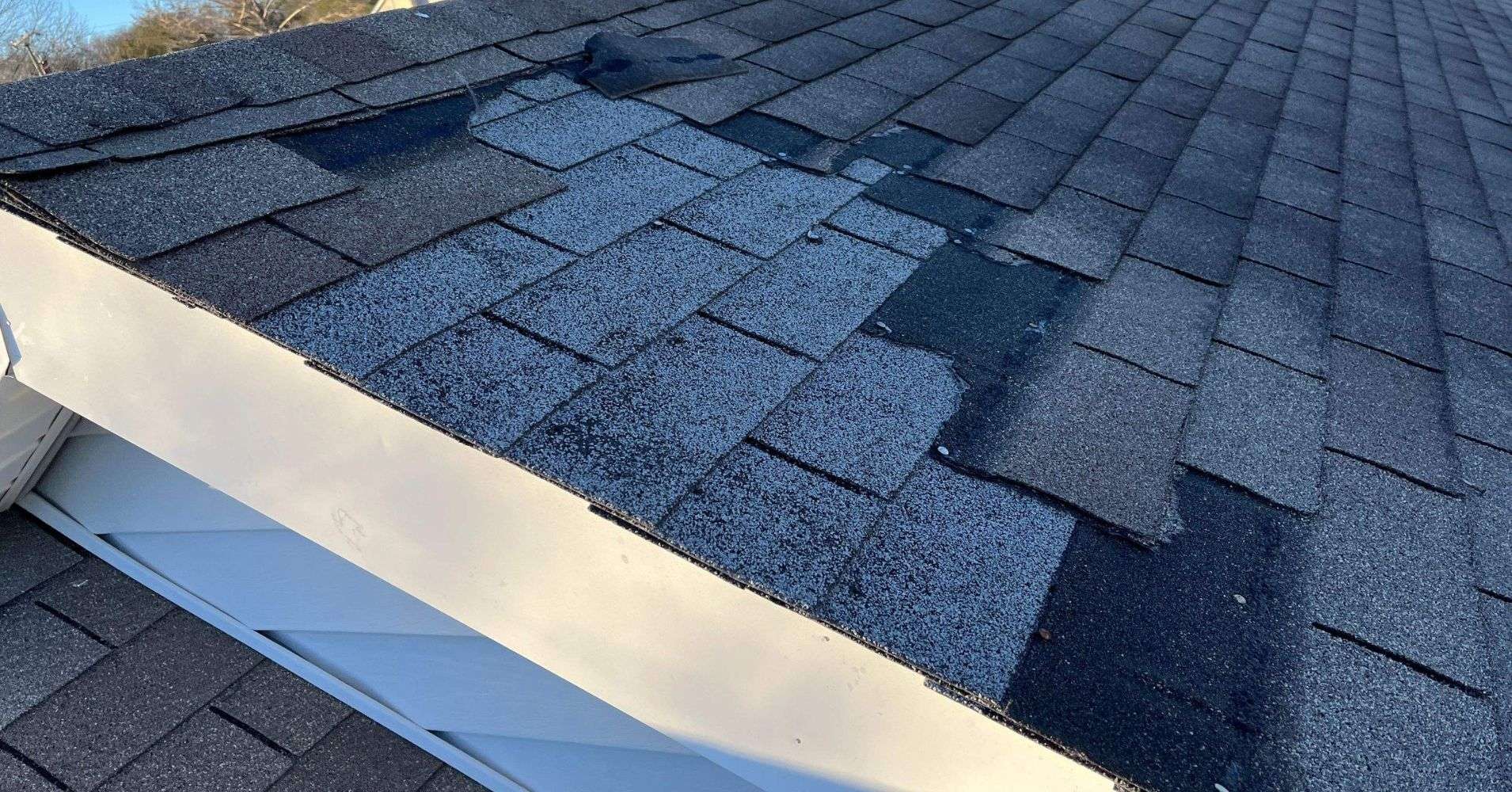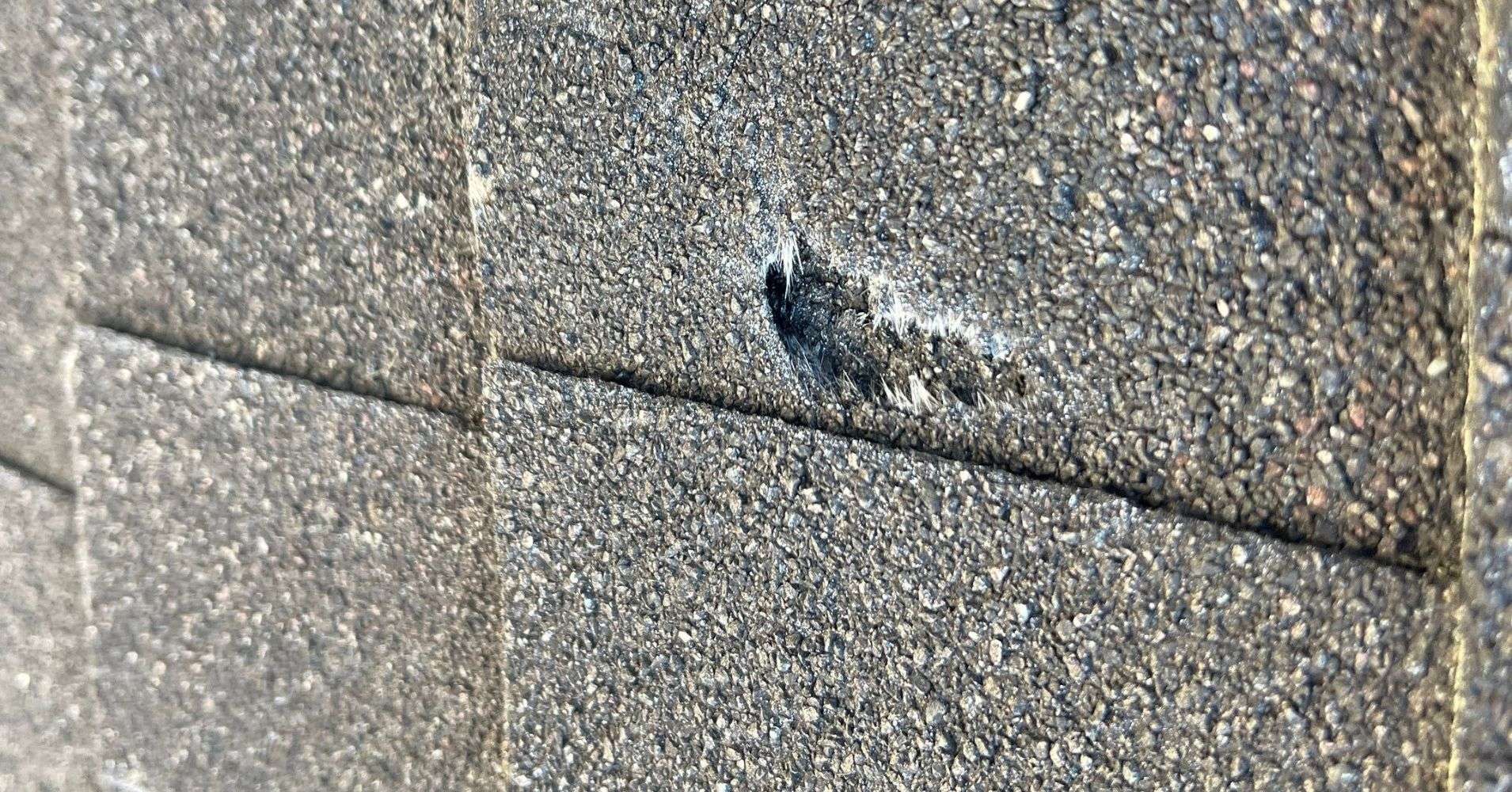SUMMER STORMS 101: Everything You Need to KNOW
When the weather starts heating up and the summer storms start rolling in. It’s important to be prepared for when these storms hit, especially if you live in an area that is prone to severe weather. One of the most common forms of storm damage is roofing damage. In this blog post, we will explore the different types of roofing damage that can occur during a summer storm, as well as some tips on how to deal with it.
TYPICAL DAMAGE OF SUMMER STORMS
Throughout the South, summer storms are a common occurrence. If you’re a homeowner they also can mean damage to your roof and throughout your home. Keep in mind that different elements of summer storms can affect your roof differently and leave clues of damage.

WIND DAMAGE:
Storms can bring high winds that lead to downed trees and limbs, creating significant hazards. These falling objects can cause damage to your roof, gutter system, and windows, potentially leading to costly repairs. More importantly, high winds can cause shingles to blow off or crease throughout the roof. When shingles are compromised, the integrity of your roof is at risk, which can lead to leaks, water damage, and even structural failure.
HAIL DAMAGE:
Storms can produce hail, leading to significant roofing damage. Hailstones vary in size, ranging from small pellets to large stones, and can form even in warm months due to strong updrafts in thunderstorms. These updrafts carry water droplets upward, where they freeze and accumulate ice layers before falling as hail. While some hail is harmless and melts quickly, larger hailstones can cause substantial damage to property, and even injure people. It’s important to stay aware of the potential for summer hail, especially in storm-prone areas.
FLOODING:
Another type of damage caused by summer storms is flooding. Floodwaters can infiltrate your home through foundation cracks or other openings, leading to serious structural damage and harm to your belongings. The added moisture can also promote mold and algae growth in your roofing structure, attic, and beyond.
LIGHTNING:
While it’s not as common, summer storms can also bring lightning. This can be especially dangerous if your home is struck by lightning. Lightning strikes can cause fires that can destroy your home and put your family at risk.
Signs of Roofing Damage

MISSING OR DAMAGE SHINGLES:
Watch for missing or damaged shingles, as they are particularly vulnerable to wind and hail damage, which can lead to leaks and further structural issues. Signs of wear include curling, cracking, or granules accumulating in gutters, indicating the shingles are deteriorating (aka degranulation). Even loose shingles, which can be easily dislodged by a strong gust of wind, should be promptly fixed by a professional roofer to prevent more extensive damage and costly repairs down the line.
GUTTER DAMAGE:
Falling or hanging gutters are common indicators of summer storm damage. Strong winds can dislodge gutters from the fascia, while hail can either knock them loose or leave severe impact marks, potentially leading to leaks in the roofing structures or the interior of the home. Additionally, summer storms often deposit debris in the gutters, and this extra weight can strain and damage their structure. As previously mentioned, granule loss from asphalt shingles can also contribute to this issue by adding to the weight in the gutters.
WATER STAINS:
If you notice water stains on your ceiling or walls, this is a sign that your roof has been damaged and needs to be repaired. Water stains can also be a sign of flooding, so it’s important to have them checked out by a professional as soon as possible.
SAGGING ROOF:
If you notice that your roof is starting to sag, This could be a sign of structural damage but often is caused by water damaged sheathing from a leak or inadequate ventilation. A sagging roof can be caused by several things, including water damage, so it’s important to have it checked out as soon as possible. If the hail causes damage to your shingles or fascia, it can expose your roof to moisture. Over time, this could lead to sagging, which is a sign that your roof structure is weakening. This could indicate further damage below the surface. If you observe any sign of sagging, it’s recommended to have an expert examine your roof to ensure that it’s safe and secure.
DEBRIS ON ROOF:
After a storm, it’s not uncommon to find debris on your roof. This can be anything from tree limbs to pieces of asphalt shingles. It’s important to remove this debris as soon as possible as it can cause further damage to your roof.
FASCIA DAMAGE:
The fascia, or the trim around the edge of your roof, can be damaged by hail as well. If you notice that the paint is cracked, chipped, or discolored from a storm, this could be a sign that it has been impacted by hail.
HOW TO PREVENT DAMAGE NEXT TIME

Now that you know how to handle roofing damage caused by summer storms, you can take steps to prevent it from happening in the future.
CHECK YOUR CEILING, ATTICS, AND CRAWL SPACES
The first step in protecting your roof against summer storms is to check the interior of your home. This includes checking any ceiling, attics, and crawl spaces for any signs of water damage or issues with the roof. Signs of potential issues include:
• Mold or mildew signs.
• Light shining through in the attic
• Water spots in the ceiling.
These issues mean that water is getting through your roofing shingles or underlayment and is damaging your home structure. If you do notice something off it means you’re super vulnerable if a summer storm hits and you’ll need a professional’s help.
CLEAN YOUR GUTTERS & DOWNSPOUTS:
Cleaning your gutters and downspouts is an important task that should be done regularly to ensure the proper functioning of your home’s drainage system. As debris builds up over time, it can create blockages that prevent water from flowing freely through the gutters and downspouts, leading to potential damage to your roof, walls, and foundation. When the gutter becomes filled with debris, it can weigh down your home’s structure and cause damage to the fascia. This can be a big problem if you don’t fix it before a summer storm hits.
It is recommended that you clean your gutters at least twice a year. If you live in an area with many trees or during heavy rainfall seasons, it is best to clean them more often. While cleaning, inspect the gutters for any damage or wear. If damage is found, call a roofing expert right away to have it replaced. By taking these measures, you can keep your gutters and downspouts in good condition and avoid costly repairs in the future.
TRIM OVERHANGING BRANCHES:
Trimming overhanging branches is an important aspect of maintaining the safety and longevity of your roof. Over time, branches can grow too close to the roof structure, creating potential hazards for your home. Strong winds and heavy precipitation can cause branches to break, possibly causing damage to your roof or even endangering your family. Clearing away overhanging branches not only reduces the risk of damage but also helps to promote healthy growth and longevity of the trees. It’s always a good idea to hire a professional tree trimmer to ensure that the job is done safely and effectively. Remember, a little preventative maintenance can go a long way in protecting your home and family.
SECURE OUTDOOR FURNITURE:
During a summer storm, strong winds can pick up and throw around patio furniture and other outdoor items. To prevent this from happening, make sure to secure your outdoor furniture to the ground or bring it inside during a storm.
DOES HOMEOWNERS INSURANCE POLICIES COVER SUMMER STORM DAMAGE?
If your home gets damaged in a summer storm, your homeowners’ insurance might provide coverage depending on the policy. To ensure you know what your policy covers and what it doesn’t, it’s important to read through it. Usually, policies will provide coverage for repairs caused by accidental physical damage due to a storm or natural disaster, although certain limits may apply. If your home gets affected by hail, wind, flooding or more you should call a professional roofing contractor for a thorough roof inspection. They can tell you whether you’re likely to be eligible for a roofing insurance claim or not.
THE BENEFITS OF A SUMMER ROOF REPLACEMENT
Summer is the perfect time for a home renovation project, and getting a new roof is one of the most beneficial upgrades you can make. From greater cost savings to improved installation conditions, here are some of the top reasons a summer roof replacement is ideal.
COST SAVINGS
It is widely accepted that roof replacement or repair costs are typically lower during the summer months. Contractors and suppliers tend to be more competitive in their pricing, knowing that they will have plenty of business over the summer season.
IMPROVED INSTALLATION CONDITIONS
The summer months offer better weather conditions with less rain and humidity, making it more convenient to install a roof without interruptions. This is particularly helpful for materials like asphalt shingles and underlayment that can be affected by moisture.
FASTER PROJECT COMPLETION
During summer months, replacement projects are completed faster because there are fewer delays caused by rain or snow. Moreover, the possibility of the temperature dropping towards freezing – which can halt the building process – is also reduced. Additionally, obtaining a permit can be easier during this time because many building departments are closed for the holidays.
MORE FLEXIBLE SCHEDULING
During the summer, roofing contractors have more daylight and working hours which allows them to finish more projects and have more flexible scheduling. Most roofing companies can replace a small home in just one day, which means your project might be completed more quickly than during the winter months.
BEAT THE RUSH
As with any home improvement project, it’s important to beat the rush of other homeowners looking to have their roofs replaced in the fall and winter. By starting your roof replacement in the summer, you can avoid potential delays caused by the increased demand for roofing services during peak seasons.
YOU CAN FIX YOUR WATER DAMAGE BEFORE WINTER
Finally, if you’ve had a leak in your roof or have noticed signs of water damage, summer is the ideal time to get it fixed before it gets any worse. With winter conditions on their way, that damage can be exacerbated and require more costly repairs down the line.
PREPARED FOR THE SUMMER STORMS? IF NOT, BOOK AN INSPECTION TODAY!
As a homeowner, it’s crucial to understand the materials and structure of your roof. Regular maintenance, such as inspecting roofing materials, cleaning gutters and downspouts, checking for missing shingles or tiles, and trimming overhanging branches, can preserve your roof’s integrity for years. To prepare for summer storms, the most important step is to hire a professional roofing contractor for an inspection. Many companies offer FREE roofing inspections, thoroughly assessing every aspect of your roof and providing solutions to ensure it’s ready to withstand harsh summer weather.
If damage has already occurred, it’s crucial to contact a roofing contractor as soon as possible. Whether you need an assessment, repairs, a complete roof replacement, or assistance with a homeowner’s insurance claim, professional help is essential. For residents of Tennessee, Roof MD is here to guide you through every step, ensuring your roof remains in excellent condition. We offer FREE Roof Inspections and are prepared to help you get ready for the upcoming summer storms. Get in touch with us today to get started!
